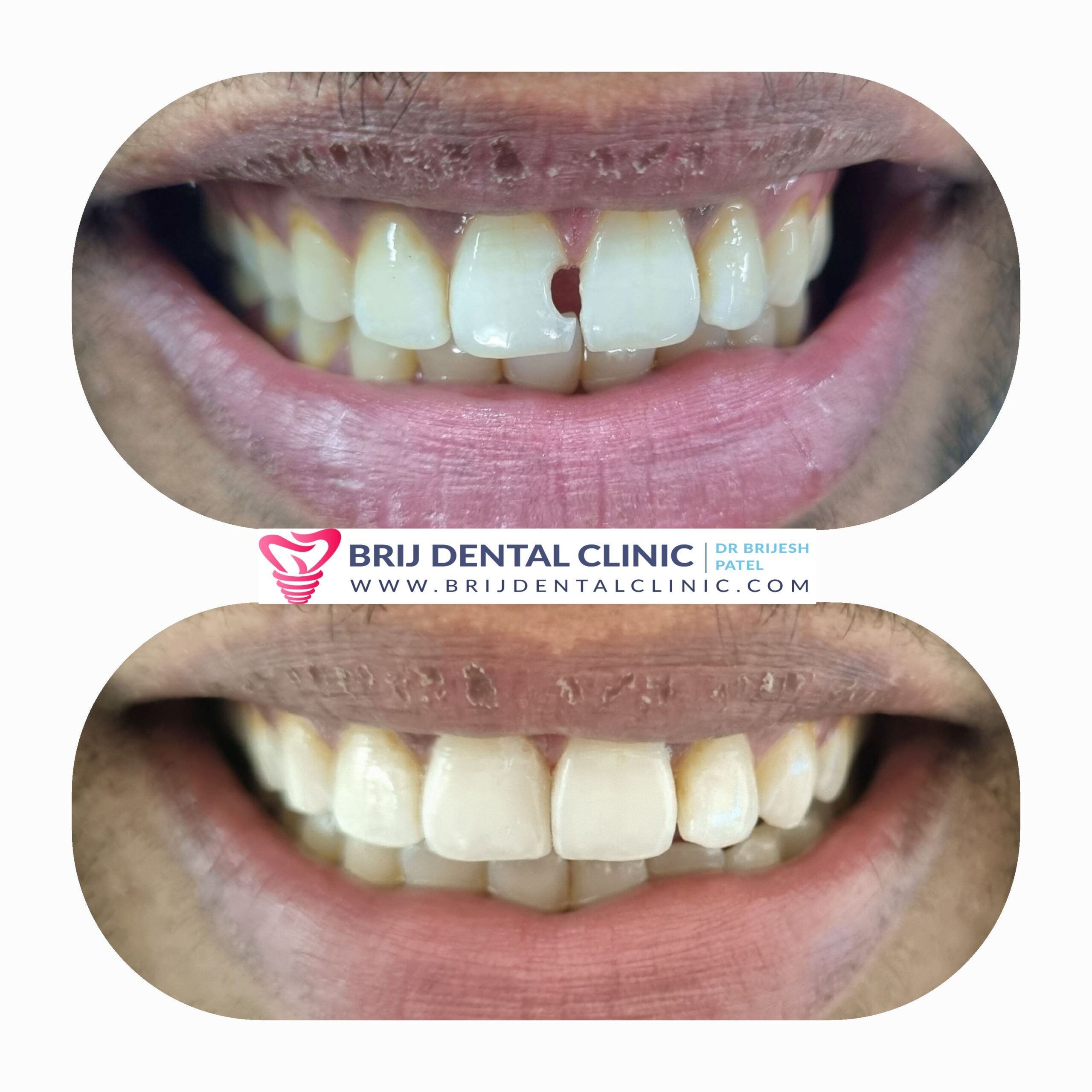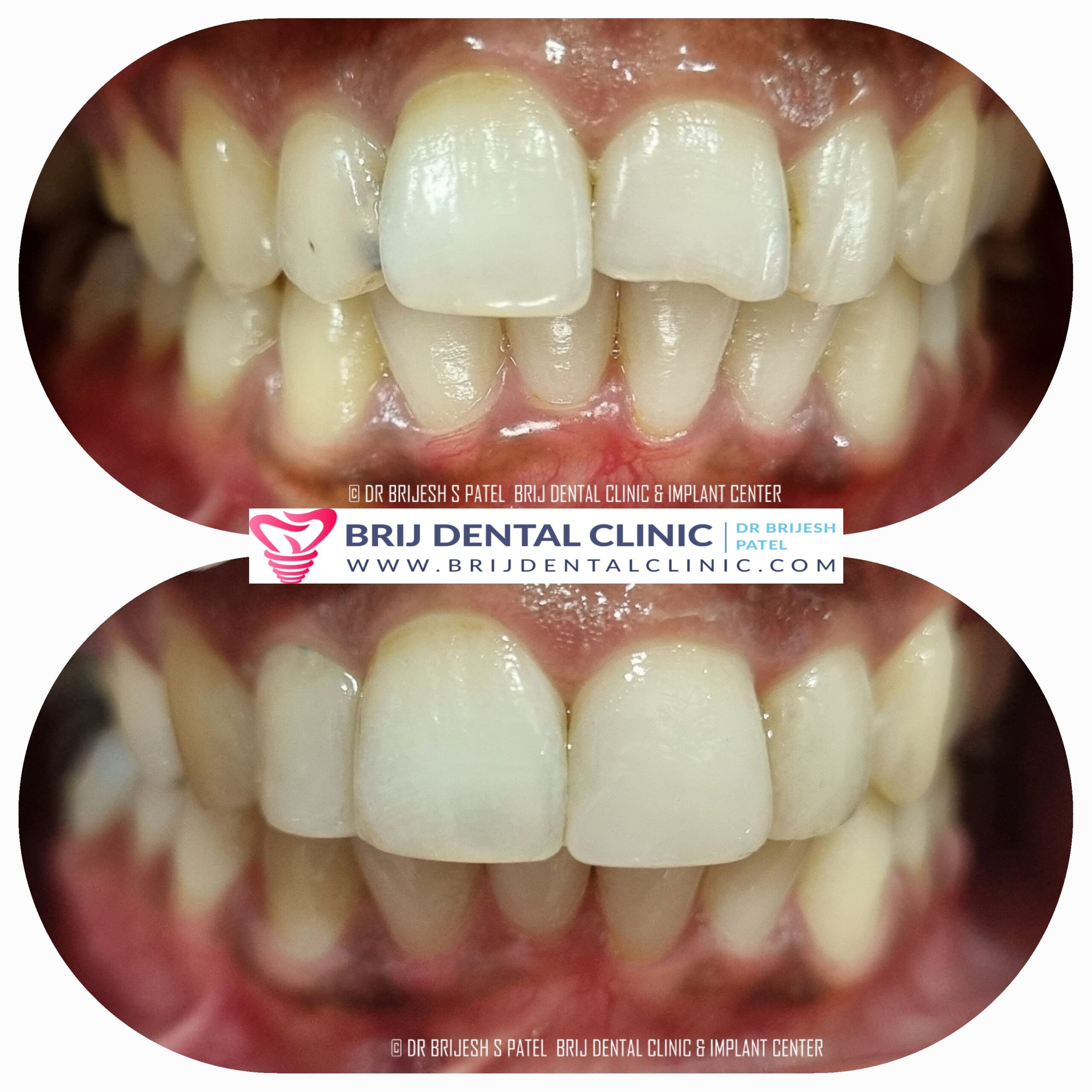Cosmetic Bonding Cases

Cases Of Broken Or Damaged Teeth – Restored By Cosmetic Bonding (Composite Veneer) Before & After Photos
Cosmetic teeth bonding is a dental procedure used to improve the appearance of your teeth. It involves applying a tooth-colored resin to teeth that are chipped, cracked, discolored, or have gaps. The procedure is simple, relatively inexpensive, and can offer immediate results.
1. Consultation and Assessment:
The dentist will assess your overall oral health, the condition of your teeth, and your cosmetic goals to determine if bonding is the right choice for you.
2. Tooth Preparation:
Minimal tooth preparation is required. There’s no need to file or reshape the tooth structure significantly.
The dentist will clean the tooth and may roughen the surface slightly to allow better adhesion of the bonding material.
A small amount of enamel may be removed in some cases if necessary.
3. Choosing the Right Shade:
The dentist will match the composite resin to the natural color of your teeth. There are various shades available to ensure a seamless result.
4. Application of Resin:
The dentist will apply a putty-like composite resin directly to the surface of the tooth in layers.
The material is shaped and contoured to cover imperfections such as chips, cracks, or gaps.
The resin is hardened using a special ultraviolet (UV) light to ensure proper adhesion to the tooth.
5. Shaping and Polishing:
Once hardened, the dentist will refine the shape and size of the bonded tooth to make it look natural.
The bonding is polished to match the appearance of natural enamel, giving it a smooth, shiny finish.
6. Final Adjustments:
The dentist will check the bite and make any necessary adjustments to ensure the bonded tooth feels comfortable and does not interfere with your bite.
7. Post-Procedure Care:
The dentist will give aftercare instructions, such as avoiding staining foods or drinks (e.g., coffee, red wine) for 48 hours.
Bonding is durable, but it can chip or stain over time, so proper oral hygiene is important.
Benefits of Cosmetic Teeth Bonding:
Quick Procedure: Can be completed in a single visit, usually within 30 to 60 minutes per tooth.
Minimal Discomfort: It’s a non-invasive procedure with little to no pain for most patients.
Cost-Effective: More affordable compared to other cosmetic procedures like veneers or crowns.
Versatile: Ideal for various cosmetic issues, such as gaps between teeth, discoloration, chips, or lengthening teeth.
Limitations of Bonding:
Durability: Bonding is not as long-lasting as veneers or crowns, and it may last 5 to 10 years before needing repairs or touch-ups.
Staining: Composite resin may stain over time, particularly if you consume staining foods and beverages.
Not Ideal for Extensive Repairs: For major damage, veneers or crowns may be better suited.
Aftercare Tips:
Good Oral Hygiene: Brush and floss regularly to maintain the bonding and prevent decay.
Avoid Hard Foods: Hard items (e.g., ice, pens) can cause the bonding to chip or break.
Regular Dental Check-ups: Keep regular appointments with your dentist to monitor the condition of the bonding and make any necessary adjustments.


























